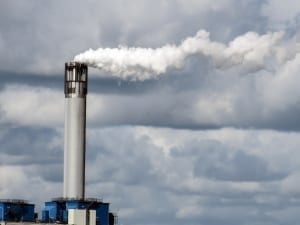The South African National Treasury today, 2 May 2013, published the much anticipated Carbon Tax Policy Paper, “Reducing greenhouse gas emissions and facilitating the transition to a green economy” for public comment. According to a statement by National Treasury, this is the second and final round of comments requested on carbon tax policy, before government proceeds with the publication of draft legislation to give effect to carbon taxes later this year for implementation from 1 January 2015.
A carbon tax rate of R120 per ton of CO2e increasing at 10 per cent per annum will be implemented during the first phase, set to commence 1 January 2015, however when the tax-free threshold and additional relief suggested by National Treasury are taken into account, the effective tax rate will range between R12 and R48 per ton of CO2e – and zero for the agricultural and waste sectors. This is because the carbon tax will be based on emissions derived from emission factors linked to the fuel inputs used. It will also cover emissions from all stationary sources, including process emissions, with the key design features of the carbon tax including a phased approach to the implementation of the carbon tax. The first phase, also referred to as the introductory phase, will be for five years, effective from 1 January 2015 to 31 December 2019, followed by Phase 2 also scheduled to last five years, from 2020 to 2025. According to National Treasury, follow up phases can and will be explored at a later stage. Waste sector implications An important design feature to note for industry though is that it includes an across the board basic 60 per cent tax free threshold of actual emissions below which the tax will not be payable, as well as an additional 10 per cent relief for certain sectors to allow for technical or structural limitations to reduce emissions, or rather specifically process emissions. More importantly for the waste management and recycling sectors, up to an additional 10 per cent relief is included for emissions intensive and trade intensive sectors, e.g. iron and steel, cement, glass, etc. to, as National Treasury states, “take into account the risk of carbon leakage and competitiveness concerns.” This is in addition to emissions from the agricultural and waste sectors being exempt during the first phase. This complete exemption will however be reviewed during the second phase.The electricity sector will qualify for a tax free threshold of up to 70 per cent and some sectors will be able to qualify for a tax free threshold of up to 90 per cent during the first phase.
Changing the climate change dynamic “Climate change poses a major challenge to humankind, and one of the most significant ways to mitigate this risk is by reducing greenhouse gas emissions such as carbon dioxide. There is also a growing concern that climate change could slow or possibly even reverse progress on poverty reduction,” said the statement. South Africa’s strategy to make a contribution towards greenhouse gas mitigation and adaptation was adopted by government in 2011 when Cabinet approved the National Climate Change Response White Paper. This was after the commitment made by South Africa at the 2009 Copenhagen conference of parties (COP17) to undertake appropriate national actions to curb greenhouse gas (GHG) emissions by 34 per cent by 2020 and 42 per cent by 2025 below business as usual. This Carbon Tax Policy Paper updates the 2010 discussion paper “Reducing Greenhouse Gas Emissions: The Carbon Tax Option”and takes into account the public comments received. According to National Treasury, it fully takes account of the principles in both the 2010 paper as well as the 2006 Environmental Fiscal Reform Policy Paper, “which provides a policy context and foundation for the use of taxes and incentives to support the attainment of environmental objectives in a cost efficient, socially equitable and fiscally effective manner.” “The primary objective of implementing carbon taxes is to change future behaviour, rather than to raise revenue”, says National Treasury, adding that it therefore starts with a relatively low carbon price, and then progressively rises significantly after five to ten years and beyond. “This approach provides industry and other major emitters sufficient time to innovate and invest in greener technologies for the future.” The Carbon Tax Policy Paper, Reducing greenhouse gas emissions and facilitating the transition to a green economy, has officially been published as of 2 May 2013 for public comments and is available on the National Treasury website: www.treasury.gov.za. The closing date for the submission of written comments is the 2 August 2013.







